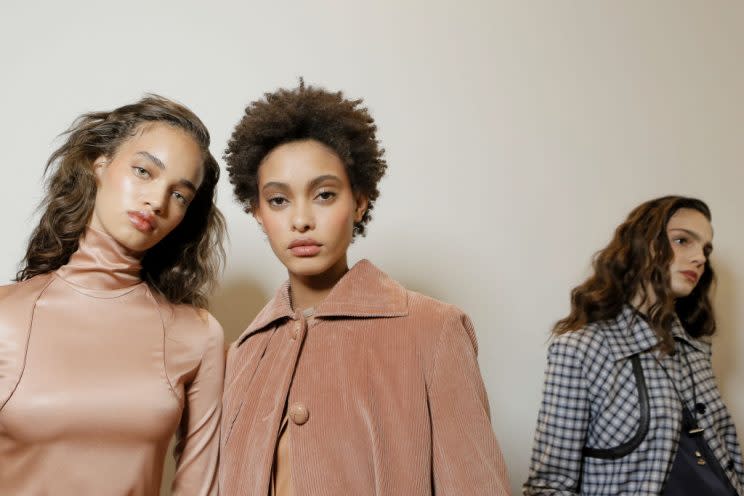Why Model Casting Calls Are Becoming More Unique

Not long ago, the word model may have evoked one specific image: A thin, tall woman with perfectly symmetrical features. These days, with the rise of plus-size models, the term is often interchangeable and nearly indefinable.
Case in point: 130-pound, 5-feet-5 model Ayesha Perry-Iqbal, a former finalist for Miss Universe Great Britain, recently shared an epiphany she had while reading an ad for a casting call. “I just read a description on a casting and it said, ‘looking for attractive woman, young, fun (almost model like),'” Perry-Iqbal wrote on the post that received almost 7,000 likes. “Now.. a few years ago ‘model like’ would have meant to me ‘tall, slender, no curves’ and I would have instantly thought that they would never look at me for this because I’m too big. I am curvy yes, but I am a professional model so that means I fit the description ‘model like’ right?”
“I feel I am constantly battling the stereotypes of what society thinks is acceptable and what I feel comfortable as. Truthfully, yes I have those moments where I think I should lose some weight (doesn’t every woman?) but then I think back and I see that I am healthy and overall very happy in my own skin and that is exactly what every woman should feel. It’s not about shaming skinny woman at all. It’s about teaching all women to be healthy and happy at whatever shape and size their body is naturally.”
Perry-Iqbal didn’t respond to Yahoo Beauty’s request for comment, but her experience isn’t totally unique. On Tuesday, Sports Illustrated Swimsuit announced an open call in search of new models, specifying, “Personality is paramount. And while fresh, beautiful faces are a must, we are also looking for diversity in both size and ethnicity. After all, ‘beauty does not conform to any set of stodgy standards.’” Clothing brand Rum + Coke offers sizes 2 to 22, yet only hires plus-size women of color for its campaigns. And 31.5 percent of New York Fashion Week models were non-white, according to the 2017 Diversity Report compiled by the Fashion Spot.
“The word ‘model’ still implies a certain size and height but there’s also a big desire right now for people who look more real and interesting, whether that’s ‘imperfect’ teeth, skin, or shapes,” Brooke Thomas, founder of Brooke Thomas Casting, in New York City, tells Yahoo Style. “Part of that is due to the fact that this country is a huge melting pot — and there’s definitely more plus-size people — and brands want to reflect that.” And while certain casting calls do require a particular aesthetic (blondes, brunettes, redheads), there’s also a huge demand for “ethnically ambiguous” men and women whose nationality or culture is vague, in order to appeal to various markets. And of course, grassroots movements such as the Women’s Marches and body-positive activists on social media help change the collective mindset.
However, more progress is needed. Former model Lilah Parsons recently shared some casting call ads from 2011 that sought models without Afros. According to screenshots she tweeted, the directive read, “Hair type: All except Afro — would like girls with quite a lot of hair and long lean arms and neck. Quite gangly and tall.”
????????????@Leomie_Anderson @ELLEUK When I started modelling, casting requests frequently contained comments like this – I hope times have changed.. pic.twitter.com/AfNexTNSVb
— Lilah Parsons (@lilahparsons) March 22, 2017
And in February, casting director James Scully vowed to be a “voice for any models, agents or all who see things wrong with this business,” writing on Instagram, that certain agents have been told “that they do not want to be presented with women of color.”
Read more from Yahoo Style + Beauty:
Model Candice Huffine’s Inspiring Advice About Having a ‘Perfect’ Body
Lingerie Store Ordered to Remove Window Display of Plus-Size, Disabled Models
Follow us on Instagram, Facebook, and Pinterest for nonstop inspiration delivered fresh to your feed, every day. For Twitter updates, follow @YahooStyle and @YahooBeauty.
